
Radcliffe College was a women's liberal arts college in Cambridge, Massachusetts, and functioned as the female coordinate institution for the all-male Harvard College. Considered founded in 1879, it was one of the Seven Sisters colleges and held the popular reputation of having a particularly intellectual, literary, and independent-minded female student body.

Harvard College is the undergraduate college of Harvard University, an Ivy League research university in Cambridge, Massachusetts. Founded in 1636, Harvard College is the original school of Harvard University, the oldest institution of higher learning in the United States and among the most prestigious in the world.
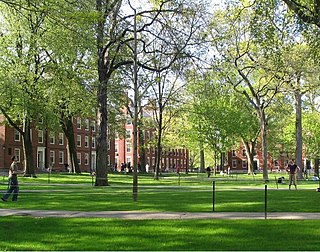
Harvard Yard, in Cambridge, Massachusetts, is the oldest part of the Harvard University campus, its historic center and modern crossroads. It contains most of the freshman dormitories, Harvard's most important libraries, Memorial Church, several classroom and departmental buildings, and the offices of senior University officials including the President of Harvard University.
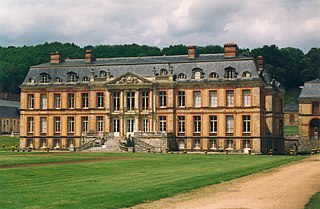
A mansard or mansard roof is a four-sided gambrel-style hip roof characterised by two slopes on each of its sides with the lower slope, punctured by dormer windows, at a steeper angle than the upper. The steep roof with windows creates an additional floor of habitable space, and reduces the overall height of the roof for a given number of habitable storeys. The upper slope of the roof may not be visible from street level when viewed from close proximity to the building.
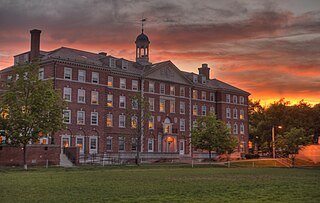
The Radcliffe Quadrangle at Harvard University, formerly the residential campus of Radcliffe College, is part of Harvard's undergraduate campus in Cambridge, Massachusetts, United States. Nicknamed the Quad, it is a traditional college quad slightly removed from the main part of campus.
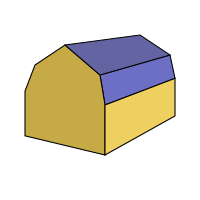
A gambrel or gambrel roof is a usually symmetrical two-sided roof with two slopes on each side. The upper slope is positioned at a shallow angle, while the lower slope is steep. This design provides the advantages of a sloped roof while maximizing headroom inside the building's upper level and shortening what would otherwise be a tall roof. The name comes from the Medieval Latin word gamba, meaning horse's hock or leg. The term gambrel is of American origin, the older, European name being a curb roof.

The Museum of Comparative Zoology is a zoology museum located on the grounds of Harvard University in Cambridge, Massachusetts. It is one of three natural-history research museums at Harvard, whose public face is the Harvard Museum of Natural History. Harvard MCZ's collections consist of some 21 million specimens, of which several thousand are on rotating display at the public museum. The current director of the MCZ is James Hanken, the Louis Agassiz Professor of Zoology at Harvard.

Weld Boathouse is a Harvard-owned building on the bank of the Charles River in Cambridge, Massachusetts. It is named after George Walker Weld, who bequeathed the funds for its construction.

In architecture, a quadrangle is a space or a courtyard, usually rectangular in plan, the sides of which are entirely or mainly occupied by parts of a large building. The word is probably most closely associated with college or university campus architecture, but quadrangles are also found in other buildings such as palaces. Most quadrangles are open-air, though a few have been roofed over, to provide additional space for social meeting areas or coffee shops for students.

Grace Hopkinson Eliot Hall, often called Eliot Hall, is a historic dormitory building on the Radcliffe Quadrangle of Harvard University in Cambridge, Massachusetts. The four story neo-Georgian brick building was built in 1907 to a design by Alexander Wadsworth Longfellow, Jr. It is a duplicate of Bertram Hall, which is adjacent, except some of its architectural details were simplified to reduce costs. The house is named in honor of Grace Hopkinson Eliot, the wife of Harvard President Charles W. Eliot. The building is now one of the dormitories of Cabot House.
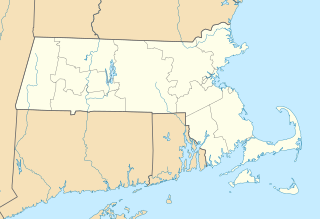
Bertram Hall at Radcliffe College is an historic dormitory building on the Radcliffe Quadrangle of Harvard University at 53 Shepard Street in Cambridge, Massachusetts. Built in 1901, it was the first dormitory building constructed for Radcliffe College. The building is now one of the dormitories of Harvard's Cabot House. It was listed on the National Register of Historic Places in 1986.

The Harvard–Yenching Library is the primary location for East Asia-related collections at Harvard Library. In addition to East Asian languages, it houses collections in European languages and Southeast Asian language (Vietnamese). Totaling more than 1.5 million volumes, the Harvard-Yenching Library has one of the largest collections in East Asian studies outside of Asia. The library has been located at 2 Divinity Avenue on the Cambridge campus of Harvard University since around 1957. The building was originally built in 1929 for Harvard's Institute of Geographical Exploration and currently houses part of the Harvard-Yenching Institute and the Department of East Asian Languages and Civilizations, in addition to the Harvard-Yenching Library.
The Chilton Club is a private social club established in 1910, in the Back Bay area of Boston, Massachusetts. Founded by Pauline Revere Thayer, the club was intended in part as a counterpoint to the Mayflower Club. The club was named after Mary Chilton because she had been the first woman to step out of the Mayflower.

Norwich City Hall is the seat of municipal government in Norwich, Connecticut. It is located at Union Street and Broadway, prominently overlooking the city's central business district. Built in 1870-73, when Norwich was still a town, it has served as the seat of municipal government since then. Architecturally it is a prominent statewide example of civic Second Empire architecture, and was listed on the National Register of Historic Places in 1983 for its architecture and history.

The Cambridge Center for Adult Education (CCAE), a non-profit corporation in Cambridge, Massachusetts, has been teaching adult education courses at 42 Brattle Street since taking over the building from the Cambridge Social Union in 1938.

Lamont Library, in the southeast corner of Harvard Yard in Cambridge, Massachusetts, houses the Harvard College Library's primary undergraduate collection in humanities and social sciences. It was the first library in the United States specifically planned to serve undergraduates. Women were admitted beginning in 1967.
Boylston Hall is a Harvard University classroom and academic office building lecture hall near the southwest corner of Harvard Yard, Cambridge, Massachusetts.

Harvard Hall is a Harvard University classroom building in Harvard Yard, Cambridge, Massachusetts.
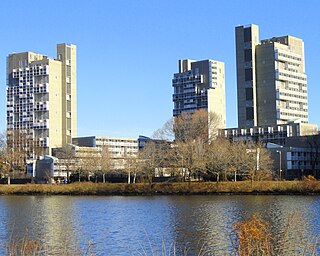
Peabody Terrace, on the north bank of the Charles River in Cambridge, Massachusetts, is a Harvard University housing complex primarily serving graduate students, particularly married students and their families. Designed in the brutalist style and constructed in 1964, its three-story perimeter grows to five and seven stories within, with three interior 22-story towers.

Second Empire, in the United States and Canada, is an architectural style most popular between 1865 and 1900. Second Empire architecture developed from the redevelopment of Paris under Napoleon III's Second French Empire and looked to French Renaissance precedents. It was characterized by a mansard roof, elaborate ornament, and strong massing and was notably used for public buildings as well as commercial and residential design.


















